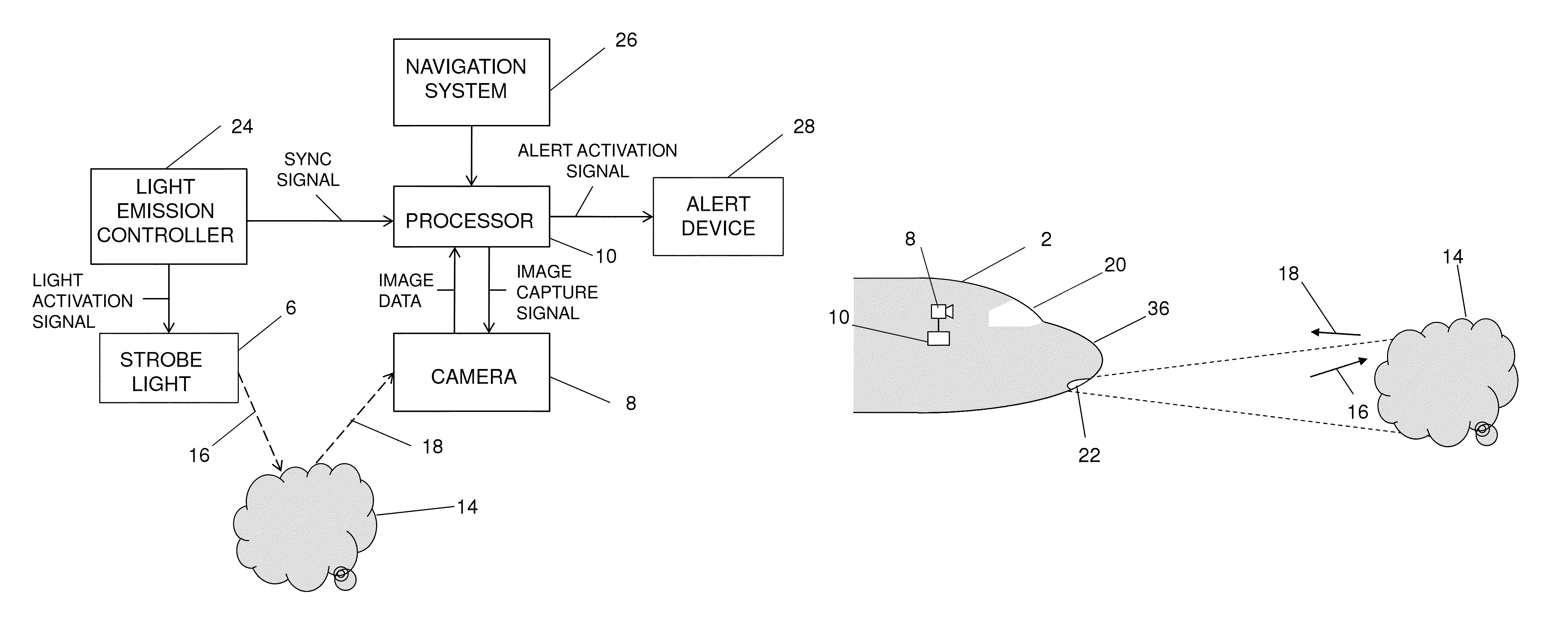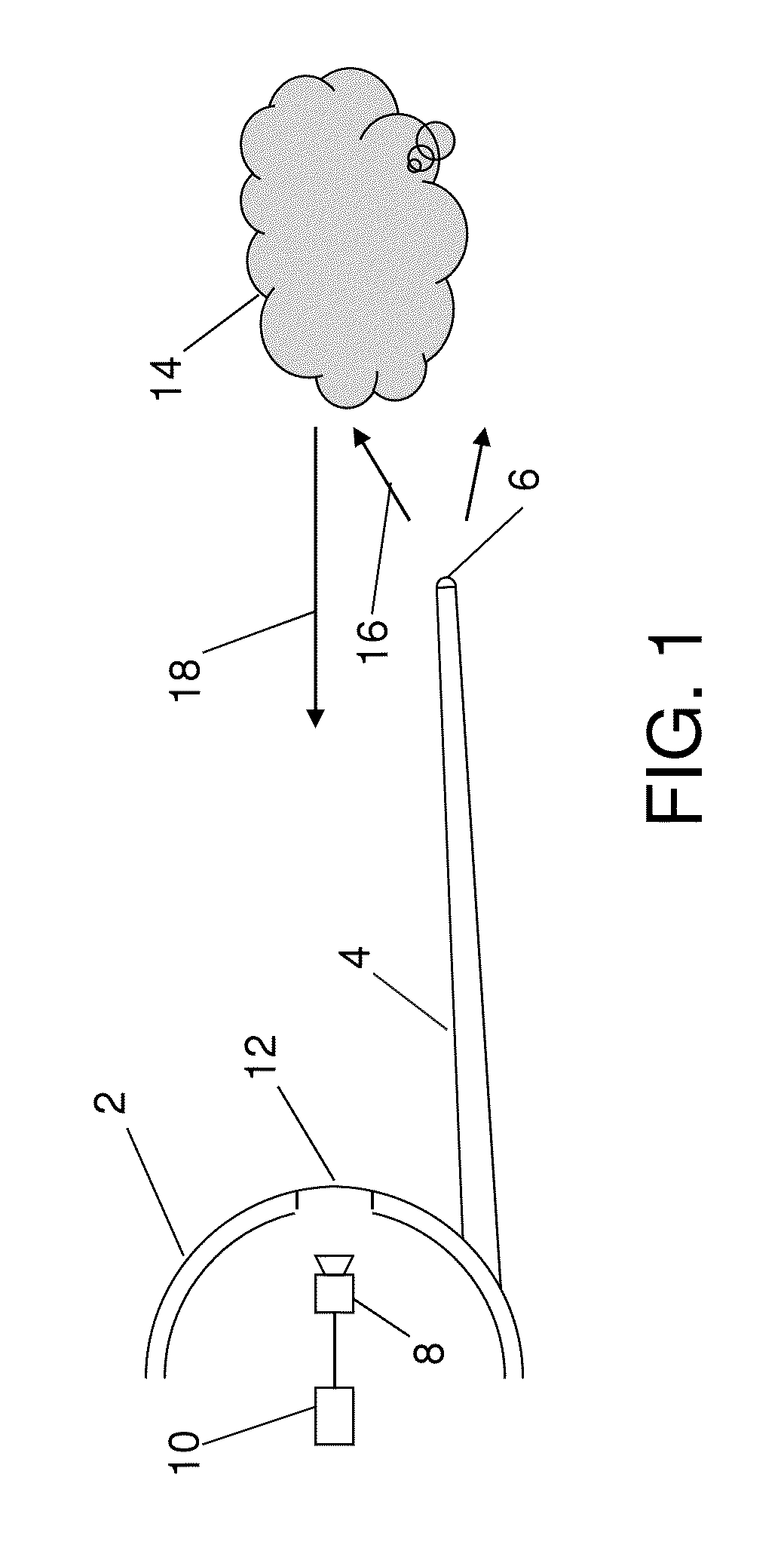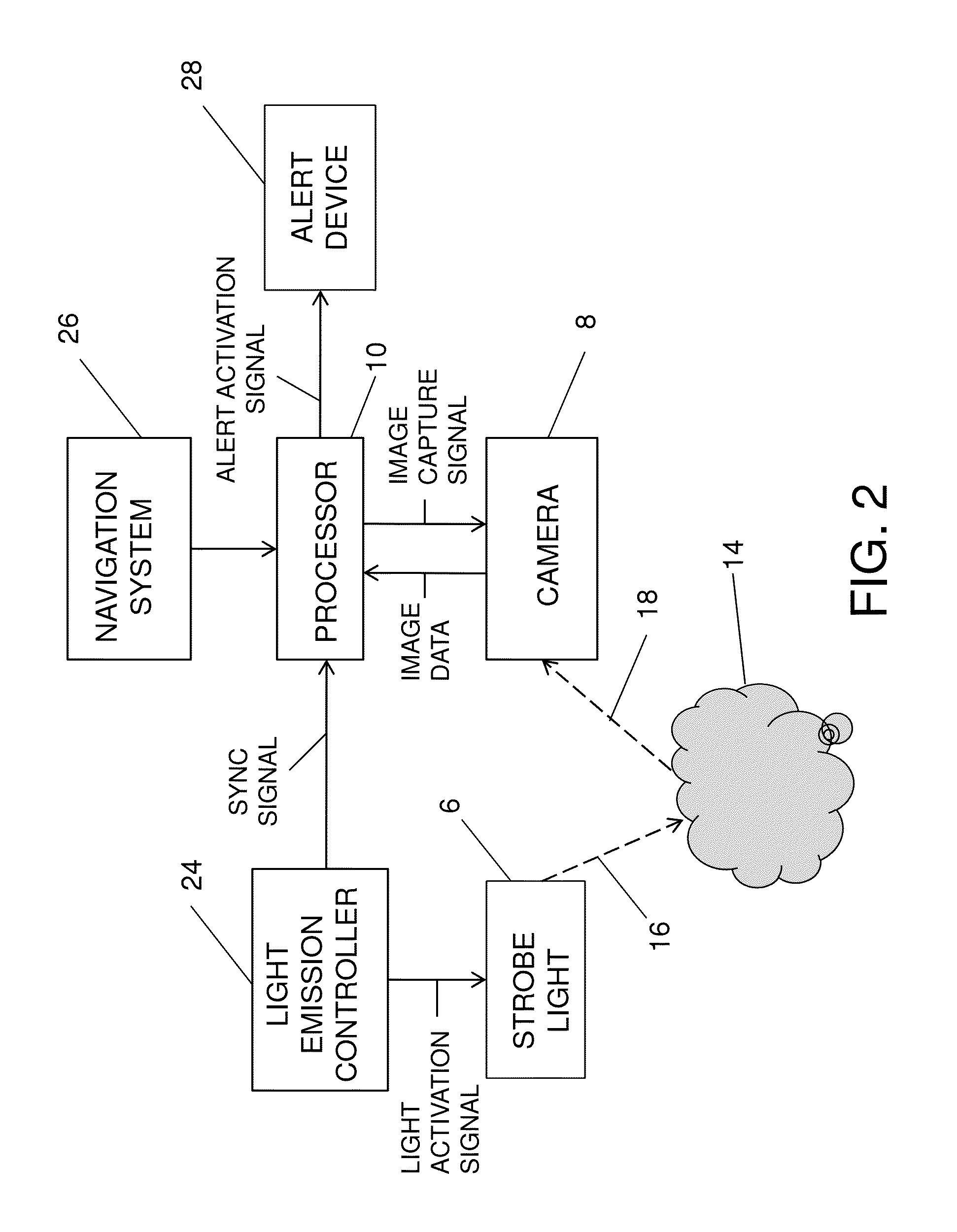Volcanic ash detection by optical backscatter using standard aircraft lights
a technology of optical backscatter and aircraft lights, which is applied in the direction of image enhancement, distance measurement, instruments, etc., can solve the problems of affecting the health of people and livestock, hazard to flying jet aircraft, damage to electronics and machinery,
- Summary
- Abstract
- Description
- Claims
- Application Information
AI Technical Summary
Benefits of technology
Problems solved by technology
Method used
Image
Examples
Embodiment Construction
[0035]Various embodiments of an optical system that detects when the type of optical scattering outside the plane is compatible with the presence of volcanic ash at cruise altitude will now be disclosed. The detection method generally comprises the steps of activating a standard light source mounted to the exterior of the aircraft and using a camera to convert impinging backscattered light radiation into digital electronic image data. The images are captured at cruise altitude, where air is normally clear. The camera sends the electronic image data to a processor that determines whether that image data is compatible with the presence of volcanic ash particles in the surrounding atmosphere. An alert is activated in response to a positive determination.
[0036]In accordance with various disclosed embodiments, the external light source may be a strobe warning light or a forward-facing landing light. Alternatively, two or more light sources may be utilized concurrently in conjunction with...
PUM
 Login to View More
Login to View More Abstract
Description
Claims
Application Information
 Login to View More
Login to View More - R&D
- Intellectual Property
- Life Sciences
- Materials
- Tech Scout
- Unparalleled Data Quality
- Higher Quality Content
- 60% Fewer Hallucinations
Browse by: Latest US Patents, China's latest patents, Technical Efficacy Thesaurus, Application Domain, Technology Topic, Popular Technical Reports.
© 2025 PatSnap. All rights reserved.Legal|Privacy policy|Modern Slavery Act Transparency Statement|Sitemap|About US| Contact US: help@patsnap.com



